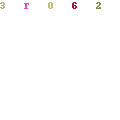How to Avoid Flushing a Washcloth Down the Toilet and Damage Your Septic System
It is highly recommended to contact a local plumber in order to remove the washcloth from the septic system.
Accidentally Flushed Washcloth Down Toilet Septic System
Accidentally flushing a washcloth down the toilet can be a distressing event, especially if your home has a septic system. Not only can it cause an array of plumbing problems, but it may also prove difficult and costly to repair. If you’ve accidentally sent a washcloth down the drain, understanding what to do can help minimize damage and repair costs.
When a washcloth is flushed, it can cause several issues in a septic system. Firstly, the flushable cloth may expand when wet and become wedged in the system’s pipes. This blockage can cause water to build up in your plumbing system, creating pressure that leads to leaks or even pipe bursts. Secondly, foreign substances introduced into the septic tank may throw off bacterial balance and interfere with wastewater treatment processing. Thirdly, the excess material in the tank might clog up or otherwise damage drains or seepage pits.
The best course of action when a washcloth is flushed is to act quickly and contact your local plumbing professional right away. They’ll be able to diagnose any issues your system has endured and recommend effective solutions such as pipe repairs or replacement parts if needed. In addition, they’ll also be able to add cleaning products that eliminate excess debris thrown off by the accidental flush. Taking these steps will help preserve your home’s plumbing and prevent future accidents.
Signs of a Washcloth Going Down the Toilet
Accidents happen and sometimes items like a washcloth can get flushed down the toilet. If youve just realized that youve accidentally flushed a washcloth in your septic system, there are certain signs that you can look for to determine if its still in the system. The most obvious one is if you can actually see the washcloth in the toilet bowl or in the pipe leading to your septic system. Additionally, if you hear strange flushing sounds or gurgling noises coming from your toilet, this could be a sign that something lodged down the drain is causing a blockage.
Effect on Septic System Due to Flushed Washcloth
If a washcloth has been flushed and is stuck in your septic system, it can have a major effect on how it functions. Depending on its size and material, it could cause blockages and clogs throughout the entire system. This could lead to wastewater backup into toilets, showers and other plumbing fixtures, as well as damage to other components of the septic system such as pipes and tanks. Its important to act quickly if you think there may be an issue with blockages due to a washcloth being flushed down your toilet.
Dealing with a Blocked Septic System
If you think that something is causing blockages within your septic system due to accidentally flushing a washcloth down your toilet, there are several ways that you can troubleshoot these issues. The first step would be to check for any visible signs of clogs or blockages such as slow-draining water or foul odors coming from drains or toilets in your home. If this doesn’t solve the problem then it may be necessary to call in professional assistance who will have special tools and equipment needed to unclog or repair any damages done by the blocked washcloth.
Pros and Cons of Using a Plunger to Remove Clog
Using a plunger is often one of the first steps taken when trying to clear out blocked drains or toilets caused by an accidentally flushed washcloth. There are several advantages of using this tool including its simplicity, affordability and portability which makes it ideal for smaller jobs around the house. However there are some potential drawbacks such as not having enough pressure from manual plungers when dealing with larger clogs or not having enough leverage when trying to reach deeper clogs which may require professional help for removal.
Cleaning or Replacing Components in the Septic System
If special tools are needed for removing large blockages due to an accidentally flushed washcloth then more extreme measures might need to be taken such as cleaning out waste and sludge from tanks or inspecting drains and tank components for any damages caused by clogs within your septic system. In some cases, individual components might need replacing due to wear and tear which could include pipes, pumps or tanks depending on their age and condition prior to being blocked by an item like a washed cloth being mistakenly sent down them.
Accidentally Flushed Washcloth Down Toilet Septic System
It can be an unpleasant surprise to realize that a washcloth has been accidentally flushed down the toilet and is now clogging the septic system. This can result in foul odors and other issues, making it important to take steps to rectify the situation. There are a few different approaches that can be taken, such as using septic additives for treatment of blockages and contamination, as well as taking preventive measures for avoiding sewer issues altogether.
Septic Additives for Treatment of Blockages and Contamination
When dealing with a clogged septic system, it’s important to use the right products to ensure that it’s done safely and effectively. Non-toxic additives are available for clearing out blockage without causing any damage or harm. These types of additives are designed to break down organic matter that may be causing the blockage in the innards of the system. Chemicals may also be used in some cases, although they should only be used if absolutely necessary and always with caution.
Bathroom Items That Should Not be Flushed Down Toilets
In order to avoid any problems with your septic system, it’s important to know what types of items should never be flushed down toilets or drains. Common household items such as hygiene products, wipes and other similar items should all go into a trash can instead of being flushed away. It’s also important to note that such items can often cause damage if they make their way into your plumbing system or septic tank.
Preventive Measures For Avoiding Sewer Issues
The best way to prevent any issues from arising due to flushing inappropriate items is by being aware of what should not go into your plumbing system or septic tank in the first place. Knowing what items should not be flushed is key, as well as having regular maintenance checks done on your systems on a regular basis. Taking these steps can help you avoid larger problems down the line and keep your homes plumbing running smoothly for years to come!
FAQ & Answers
Q: What are the signs of a washcloth going down the toilet?
A: The most obvious sign of a washcloth going down the toilet is seeing it go down, as well as hearing the sound of flushing.
Q: What effect can a flushed washcloth have on a septic system?
A: Flushed washcloths can result in blockages and clogs in the septic system, which can cause damage to the system.
Q: What should I do if my septic system is blocked?
A: If your septic system is blocked, you should first try to troubleshoot the clog yourself. If that does not work, you may need to call in a professional.
Q: What are the pros and cons of using a plunger to remove a clog?
A: The advantage of using a plunger is that its relatively inexpensive and can be used without professional assistance. However, there may be some issues with using a plunger, such as not having enough pressure or force to dislodge the blockage.
Q: What items should never be flushed down toilets?
A: Items such as hygiene products, wipes, paper towels, and other common household items should never be flushed down toilets. The best way to avoid sewer issues is to know what shouldn’t be flushed and to have regular maintenance checks.
In conclusion, if a washcloth has been accidentally flushed down the toilet and into the septic system, it is important to take immediate action. Depending on the size of the washcloth and the type of septic system, it may be necessary to call a plumber or specialist to assess and remove the obstruction. Taking quick action can help prevent any possible damage to the septic system and avoid costly repairs in the future.
Author Profile

-
Welcome to Liberty Is Viral, a digital nexus where curiosity is the currency and knowledge is the merchandise. We are not just another blog on the block; we are a movement, a collective of inquisitive minds committed to the ethos of liberating information and empowering individuals.
Our journey began with a simple yet profound belief: knowledge should be accessible to all, unrestricted by barriers, free as the air we breathe. Thus, in the bustling digital landscape of 2023, LibertyIsViral.com was reborn, a revitalized platform poised to quench the intellectual thirst of discerning netizens. And we can say we are a bit successful on that, since our community is expanding by the day (20,000 readers and increasing!)
Latest entries
- March 22, 2023AppliancesThe Best 2 Inch Brass Fire Hose Nozzle for Maximum Firefighting Efficiency
- March 22, 2023AppliancesElevate Your Brand with the Best Custom Next Service Due Stickers
- March 22, 2023Lawn, Patio And Exterior5 Best Bird Netting Solutions for Protecting Cherry Trees
- March 22, 2023Apparel And JewelryFind the Best Drop Cut T-Shirt for Men: Our Top Picks
